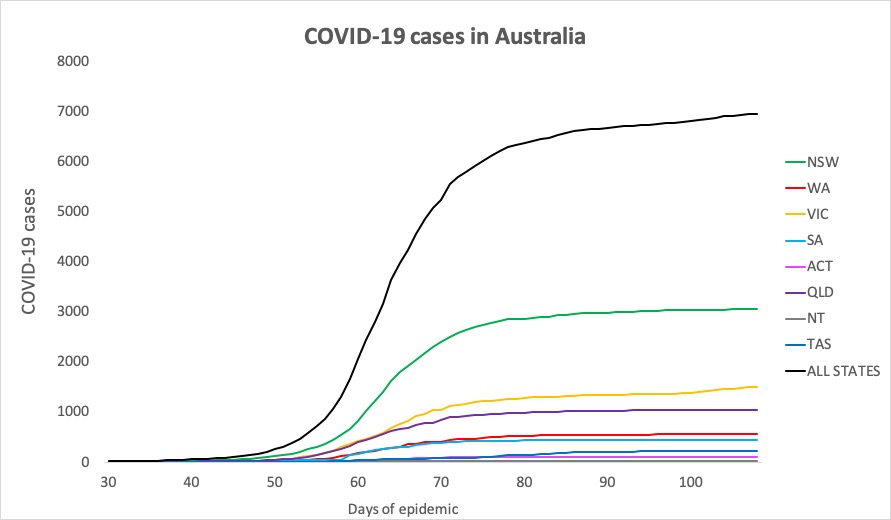Obesity in the United States may be skewing the demographic of severe COVID-19 cases towards younger age groups.
That’s it for today on The Medical Republic‘s live COVID-19 blog.
Thanks to our sponsor and supporter for funding this project with an independent grant, Boehringer Ingelheim.
The latest
- First truly electronic prescription sent and filled.
- Obesity skewing demographic of severe COVID-19 towards younger patients in the US.
- Another study finds no mortality benefits from hydroxychloroquine in COVID-19.
- The first truly electronic prescription has been prescribed and dispensed in Victoria, between a medical practice and a pharmacy in Anglesea.
According to Fred IT, the prescription involves the doctor sending the electronic prescription to the patient by SMS or email, along with a unique code or ‘token’, and the patient then forwards or presents that prescription and code to their pharmacy.
CEO of the Fred IT Group, pharmacist Paul Naismith said in a statement that this was a major step forward for Australia’s digital health network.
- Obesity in the United States may be skewing the demographic of severe COVID-19 cases towards younger age groups.
Writing in the Lancet, researchers presented their analysis of data from 265 patients admitted to intensive care with COVID-19 at six different hospitals across the US. They found a significant inverse correlation between age and BMI, such that the younger individuals were significantly more likely to be obese.
“We conclude that in populations with a high prevalence of obesity, COVID-19 will affect younger populations more than previously reported,” they wrote, stressing the need to change public messaging to make younger adults aware of their risk.
- It’s a dubious milestone, but we have just passed four million cases of COVID-19 around the world.
According to the latest situation report from WHO, Europe and the Americas are fairly evenly tied at around 1.7 million cases each, although Europe has about 50% more deaths. The lowest overall-number-of-cases prize goes to Africa, with just 44,000 infections and 1415 deaths.
- You’d be forgiven for thinking that the idea of hydroxychloroquine as a treatment for COVID-19 was dead and buried, after numerous studies finding either no benefit or even increased mortality with the treatment.
But nails are still being hammered into this particular coffin; the latest one is a retrospective cohort study published in JAMA, which suggests no improvements in in-hospital mortality with either hydroxychloroquine or azithromycin.
The study looked at the outcomes of a randomly selected sample of 1438 COVID-19 patients hospitalised in New York, who were treated with either hydroxychloroquine plus azithromycin, hydroxychloroquine alone, azithromycin alone, or neither drug, and followed for at least 28 days. Around half of patients received the combination therapy, 18% received hydroxychloroquine alone, 15% received azithromycin and 15% received neither.
After adjusting for patient demographics (age and sex), hospital, pre-existing conditions and illness severity, the study found no significant differences in in-hospital mortality between any of the treatment modalities.
At 21 days after baseline, the adjusted mortality rates were around 22% in the hydroxychloroquine?plus?azithromycin group, 19% for hydroxychloroquine alone, 11% for azithromycin alone and 18% for neither drug.
Furthermore, the study found more patients in the combined hydroxychloroquine plus azithromycin group experienced cardiac arrest and abnormal ECG findings than in any other group, closely followed by those treated with hydroxychloroquine alone.
The authors did note that the group treated with hydroxychloroquine – either alone or in combination with azithromycin – were generally sicker on presentation. They also suggested that clinicians were much more vigilant for arrhythmia in patients treated with hydroxychloroquine, because of growing awareness of this adverse effect of the drug.
They also stressed that this was an observational study, and therefore subject to all the usual limitations of such studies.
- It’s an auspicious day for Australia’s COVID-19 track record: all states but one (Victoria) recorded zero new cases in the 24 hours to 9pm yesterday. It also bodes well for the outcome of easing restrictions, which began over a week ago.
Here are today’s confirmed COVID-19 infection rates for around Australia:
National – 6948, with 97 deaths and 6179 recovered.
ACT – 107
NSW – 3053
NT – 29
QLD – 1045
SA – 439
TAS – 227
VIC – 1496
WA – 552


Disclaimer: The content on the Medical Republic COVID-19 blog is independently created by Medical Republic without input from Boehringer Ingelheim Pty Ltd. The views, information, or opinions expressed on the Medical Republic COVID-19 blog are Medical Republic’s own and do not necessarily represent those of Boehringer Ingelheim Pty Ltd. Boehringer Ingelheim Pty Ltd is not responsible for and does not verify the accuracy of any content on the Medical Republic COVID-19 blog.


